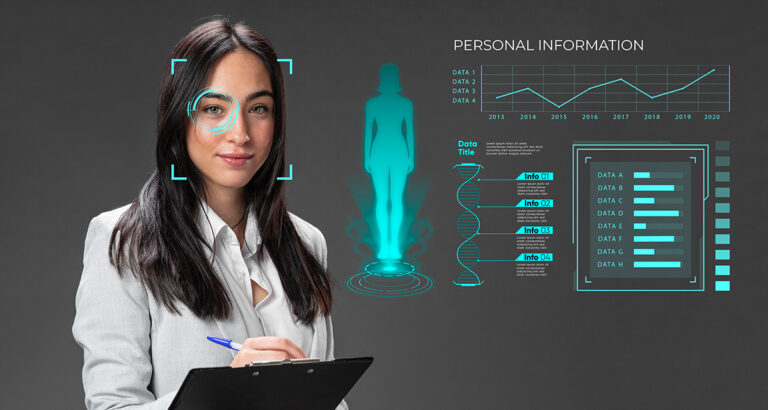In the mountain village of Ogliastra, Sardinia, a 103-year-old shepherd walks briskly up a rocky hill to check on his flock. Thousands of miles away in Okinawa, Japan, a woman in her late 90s prepares a bowl of miso soup, then joins a circle of lifelong friends for a morning chat under the sun. These are not isolated scenes. They are daily snapshots from what have come to be known as the Blue Zones — regions of the world where people live longer, healthier lives, often reaching 100 years and beyond with surprisingly low rates of chronic disease.
For healthcare professionals facing the ever-rising tide of non-communicable diseases and aging-related conditions, the Blue Zones offer not a miracle cure but a roadmap — one based not in high-tech medicine but in everyday living. This article explores how physicians and public health experts can translate the lifestyle principles of Blue Zone communities into practical, clinically relevant strategies that promote healthspan and reduce disease burden globally.
The Blue Zones at a Glance
The term Blue Zones was coined by journalist and National Geographic Fellow Dan Buettner during his research into the world’s longest-lived populations. He identified five such regions: Okinawa, Japan, home to the world’s longest-living women; Sardinia, Italy (Ogliastra region), where men live extraordinarily long lives; the Nicoya Peninsula in Costa Rica, boasting low middle-age mortality and high longevity; Ikaria, Greece, with notably low rates of dementia and chronic disease; and Loma Linda, California, a community of Seventh-day Adventists who outlive their American peers by a decade.
Despite their geographical and cultural differences, these communities share strikingly similar lifestyle characteristics, a powerful insight for clinicians focused on lifestyle medicine and preventive care. They remind us that longevity and vitality are not genetic accidents but results of consistent, interconnected habits over a lifetime.
Lifestyle Pillars of the Blue Zones
One of the most significant findings from the Blue Zones is that longevity isn’t driven by any single factor. Instead, it is the result of a complex interplay of daily habits, social structures, and cultural values. Movement is embedded into daily life in the form of walking, gardening, or manual chores. This kind of natural movement stimulates skeletal muscle and plays a critical role in maintaining insulin sensitivity, promoting glucose uptake, and releasing beneficial myokines like irisin, which have systemic anti-inflammatory effects. Encouraging patients to embrace more movement within their daily routines can have profound metabolic benefits. Unlike prescribed gym regimens, the movement in Blue Zones is spontaneous, purposeful, and low-intensity yet, it builds remarkable muscular endurance and cardiovascular resilience over time.

Equally crucial is the concept of purpose, known as “ikigai” in Okinawa and “plan de vida” in Nicoya. A defined sense of purpose has been associated with lower levels of stress hormones, improved cardiovascular outcomes, and reduced risk of Alzheimer’s disease. The clinical implications are clear: physicians should consider assessing patients’ sense of purpose as part of a comprehensive health evaluation, particularly in those experiencing chronic disease or depressive symptoms. Purpose not only enhances mental health but also correlates with improved immune responses, lower levels of pro-inflammatory cytokines, and slower telomere shortening.
Stress management is another unifying element. Blue Zone inhabitants incorporate routines that lower stress: daily prayers, naps, or social rituals. These activities promote parasympathetic activation, reducing systemic inflammation by lowering circulating levels of IL-6 and CRP. Chronic low-grade stress, often overlooked in clinical evaluations, is a significant contributor to conditions like hypertension, diabetes, and autoimmune disorders. Introducing brief, structured stress-reduction techniques like diaphragmatic breathing, gratitude journaling, or community engagement in clinical settings can be a game-changer.
Diet also plays a central role. Meals are primarily plant-based, emphasizing legumes, vegetables, whole grains, and nuts, with minimal intake of processed foods and meat. The Okinawan diet, rich in sweet potatoes and greens, supports mitochondrial health and modulates oxidative stress. The Ikarians consume wild greens and herbal teas rich in polyphenols and anti-inflammatory compounds. A diet high in fiber improves microbiota composition, enhances insulin sensitivity, and reduces systemic inflammation. Encouraging plant-forward diets that are culturally appropriate can be a powerful tool in chronic disease prevention. The effect of fermented foods in these regions is also notable — kimchi, miso, sourdough bread, and yogurt contribute to microbial diversity and gut health.
Moderation is a recurring theme. In Okinawa, the 80% rule, or “hara hachi bu,” is practiced to avoid overeating. From a physiological standpoint, reduced caloric intake lowers insulin and IGF-1 levels, enhances autophagy, and may slow biological aging. Practicing and promoting mindful eating can be a valuable, evidence-based intervention. The act of eating slowly, in a communal setting, allows satiety signals to regulate consumption, preventing chronic overnutrition and its metabolic consequences.
Although alcohol consumption varies, some Blue Zones, like Sardinia and Ikaria, include moderate wine intake, typically consumed with meals and in social settings. Polyphenols in red wine, combined with the context of social engagement, may exert modest cardiovascular benefits. Clinicians should evaluate alcohol use in a personalized and culturally sensitive manner, promoting moderation where appropriate without recommending initiation. It is worth noting that the protective benefits often attributed to wine may be confounded by the associated lifestyle; slow eating, family meals, and laughter.
Social structure is perhaps the most underestimated health determinant. Blue Zone residents maintain close family ties and belong to strong community or faith-based networks. This social cohesion enhances psychological resilience and supports behavior change. Oxytocin release during nurturing interactions reduces blood pressure, bolsters immune function, and promotes parasympathetic tone. Loneliness, by contrast, is a major health risk, linked to higher mortality than obesity or smoking. Physicians should consider assessing social support systems during patient evaluations and advocating for community-based health interventions.
Sleep quality, though not always highlighted, is another cornerstone. Blue Zone residents follow natural circadian rhythms, often rising with the sun and sleeping soon after nightfall. Sleep hygiene contributes to neuroendocrine balance, glycemic control, and cognitive preservation. In clinical settings, advocating for sleep routines aligned with circadian biology can be as impactful as prescribing melatonin or sleep aids.
Comparing Longevity Models
The lifestyle factors in Blue Zones share features with other health-promoting models such as the Mediterranean diet, intermittent fasting, and caloric restriction. However, the Blue Zones stand apart in their integration of multiple protective factors into a sustainable way of life. Unlike reductionist models that isolate single interventions, the Blue Zone lifestyle reflects a harmonious blend of diet, movement, social connection, stress reduction, and purpose.
This integration is especially relevant in clinical practice, where lifestyle interventions often fail due to lack of sustainability or patient engagement. The Blue Zone model underscores the importance of embedding healthy behaviors into the fabric of daily living, making them more resilient to disruption and more likely to be adopted long term.
From Research to Practice

Adopting the principles of Blue Zones into clinical practice does not require dramatic lifestyle overhauls or geographic relocation. Instead, it involves a shift in how health professionals frame and deliver care. Physicians can begin by introducing the concept of healthspan, helping patients understand that living longer is not meaningful without maintaining physical and cognitive function. Comprehensive lifestyle assessments can be integrated into primary care visits. Beyond the typical questions on diet and exercise, clinicians should inquire about social connections, sources of meaning, stress levels, sleep quality, and routines. Developing a structured lifestyle history can provide a richer understanding of the patient’s environment and uncover opportunities for preventive interventions.
Multidisciplinary collaboration enhances the impact of such interventions. Partnering with nutritionists, mental health professionals, exercise physiologists, and community health workers can help patients implement and sustain lifestyle changes. Moreover, physicians can advocate for policy-level changes, such as creating walkable neighborhoods, supporting local food systems, or funding community centers that foster social interaction and purpose. Crucially, physicians must model the behaviors they promote. When doctors prioritize their own well-being, it not only improves their resilience and satisfaction but also increases patient trust and engagement. Sharing personal practices or stories can humanize the physician-patient relationship and empower patients to take ownership of their health.
The Public Health Opportunity
With aging populations and escalating rates of chronic disease, healthcare systems globally are at a tipping point. The Blue Zone model presents a scalable, low-cost framework for prevention that aligns with both individual well-being and population health. It invites a rethinking of public health strategies, shifting focus from reactive treatment to proactive lifestyle promotion. Imagine communities where clinics prescribe community garden participation, walking groups, or intergenerational mentorship programs. Schools that teach mindfulness and cooking alongside academics. Cities that prioritize parks, communal spaces, and safe sidewalks. These are not theoretical ideals — they are practices that mirror the daily lives of the world’s longest-lived people.
Healthcare systems must also evolve to reward prevention. Reimbursement models that include lifestyle counseling, community engagement, and social prescribing can facilitate systemic change. Training programs for medical students and residents should incorporate the science of longevity and behavioral change, equipping future physicians with the tools to guide patients through holistic transformations.
A New Kind of Prescription
As physicians, we routinely prescribe medications to lower blood pressure, stabilize mood, or control blood sugar. But what if we began prescribing purpose, plant-based meals, movement, and meaningful relationships? What if we considered a weekly family dinner or daily gratitude practice as essential as a statin or antihypertensive?
The lessons of the Blue Zones are neither esoteric nor unattainable. They are grounded in human biology, social structure, and culture. They reflect not the latest breakthrough, but the accumulated wisdom of how to live well. It is time we translate that wisdom into our clinical encounters, community designs, and healthcare systems. Longevity is not just about adding years to life, it is about adding life to years. The journey to Blue Zone-inspired care begins not in a remote village, but in our examination rooms, waiting areas, and public health policies. It begins with us. And perhaps, by adopting these principles ourselves and for our patients, we can usher in a new era of medicine that is not only curative but truly healing.
Let us move forward with a new vision of care. One that is not merely the absence of disease, but the presence of purpose, connection, movement, and joy. For in these seemingly simple elements lies the extraordinary possibility of lasting health and human flourishing.





